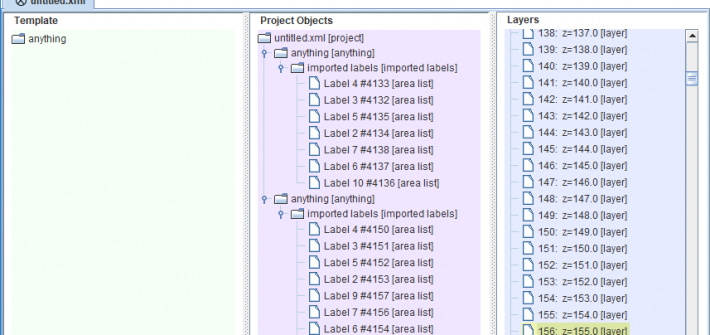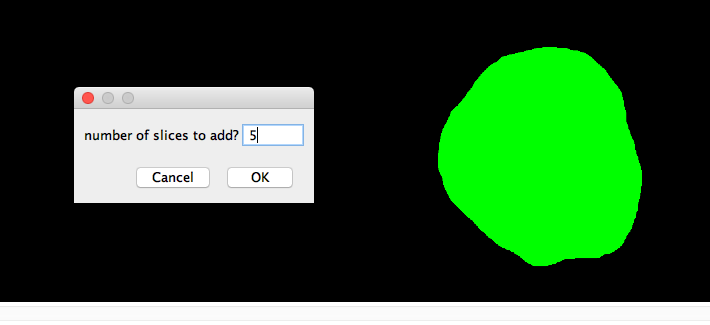Often the bit range of images needs to be adapted in order to be able to handle these files on specific computers (file size versus RAM limitations) or due to the reason that some plugins or software specifically need 8bit (or 16bit) images to work. When using the regular conversion by just by switching the […]
Fiji
Exporting ROI-substacks from TrakEM2 with known coordinate positions
There are two ways to extract the edge coordinates of an region of interest (ROI): 1) The long wayBefore starting to draw the region of interest (rectangle tool) and exporting the images (export –> make flat image), we start the macro recorder (FIJI Side bar: Plugins –> Macro –> Record), which allows to read out […]
Import of large Amira label files to TrakEM2

Some projects might need in a later project step a realignment of the image data (after segmentations have been done already) to correct for so far overlooked smaller alignment errors. It is possible to recalculate the Amira labels to the new image transformations in TrakEM2 (assumed you have done the initial image alignment in TrakEM2), […]
Screening for overlapping image ranges in subdivided MicroCT data blocks
For several reasons it can be of interest to identify the identical images in subdivided MicroCT scan data. Easiest is to inspect both consecutive data stacks face to face in Fiji, in order to find the identical images. Drag and Drop the folder with the first image stack onto the Fiji Taskbar. Choose “Use Virtual […]
Extending Amira Label Files in Fiji

In some projects data stacks need to be extended, e.g. if a structure is not completely covered in the so far sectioned part of a sample. Adding more images to an alignment in TrakEM2 and exporting the resulting image stack to Amira is easily done, however Amira will not extend the already started label file […]
Selecting several images in TrakEM2
For several reasons it can be helpful to be able to select only a range of images within the image stack in TrakEM2. For example to link those images in order to manually rotate them (see here). A selection of images is done via “right-click in canvas” –> Selection –> Select all that match Start and […]
Opening Amira Label files in FIJI
The import from Amira label files in Fiji allows to access these files without possessing an Amira license (e.g. after a lab change) and to use the labels either in TrakEM2 to plot them on your original data stack (see here) or for general image analysis purposes directly in Fiji. Under “File –> Import” you […]
Exporting image stacks from TrakEM2
Exporting aligned image stacks from TrackEM2 ist an important feature, allowing it to make use of semi-automatic segmentation tools available in others Open Source Software packages (such als MIB, Drishti, Ilastik…) as well as commercial packages (Amira, Imaris, VGstudio…).The export ist easily done after the alignment (see here), either as export of the complete canvas (everything visible in the […]
Re-orientate images or complete stacks in TrakEM2
After aligning all images in TrakEM2, the object of interest might be positioned in an oblique angle. The orientation can be easily be changed. If the whole stack should be rotateted, make sure that all images are linked ( chain sign in the image bar on the left). If the images are not linked, only […]
Testing different CLAHE parameters on a single image
In order to avoid tediously manually testing different possible combinations of input parameters for the CLAHE filter, the following Fiji macro can be used to get a fast overview. Input image: Result: